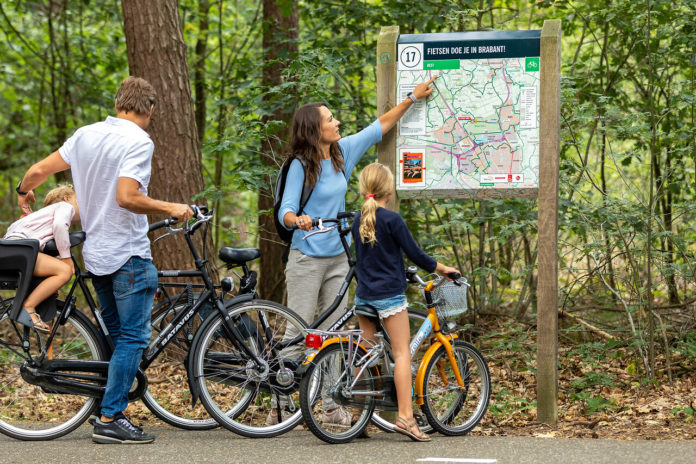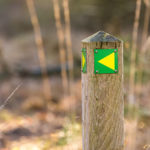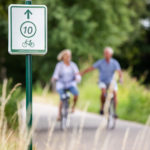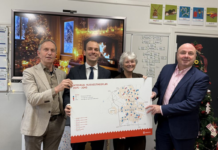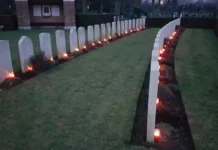When my wife was offered a job in Eindhoven, was I excited? To be honest, despite having grown up in Brabant, or maybe because of that, not really. Returning to our roots, great, but how would living in the drab company town we remembered Eindhoven as, measure up against the spectacular and dynamic locations we have spent most of our adult lives in? I could not have been more wrong.
The city has reinvented itself turning its industrial history into a Brainport future, and it is a very visible reinvention at that. The many internationals populating all parts of the city, and the ongoing reconstruction of the built environment that may not have the gargantuan scale of metropolitan powerhouses like Shanghai and Singapore but is ambitious enough, have turned what used to be a non-city into an urban exploration ground of eminently human proportions.
That in itself was already a positive surprise, but I was even more enchanted by the green outdoors’ turn-around. The Brabant I had left long ago was a rural environment scarred and characterised by industrial agriculture, car-centric planning, and disappearing natural habitats. The Brabant I returned to offers a stunning variety of accessible green outdoors right on my doorstep.
The icing on the cake was my discovery of a dense network of superbly marked cycling and walking routes covering the entire region, and way beyond. It is the largest network of the whole country (its cycling network is even the largest integrated set of routes in the whole of Europe), and as an infrastructural resource for independent exploration, it has no equal.
Anyone arriving in this region to live and work and eager to explore their new surroundings has easy access to major highlights info. Eindhoven’s tourist information website is the obvious entry point for English speakers. The site is great for the basics about the hippest and most happening districts and about what the city offers in terms of shopping, food and drinks, and culture and design. It also hosts a comprehensive events calendar and encourages you to explore Eindhoven’s beautiful and diverse parks and make use of the walking and cycling routes available at the city’s tourism information point at the central railway station or joining one of their group tours (highly recommended!). Unfortunately, the site is mum on the network mentioned above of marked walking and cycling routes traversing and surrounding the city.
Luckily all one needs and much more is available in English in one place, the site of the developer and manager of this infrastructural resource: Visit Brabant. It covers all of Brabant, is content-rich, and easy to navigate. What I especially want to highlight here is the interactive map facility it offers that makes planning walking and cycling trips super easy.
The interactive map below shows the routes in the immediate surroundings. You can slide the map around and zoom in for more detail and out for a larger scale overview of the routes. The tabs at the top of the map allow you to switch between the integrated network of routes and intersections for walking and cycling. It even allows you to see where marked routes for mountain bikers and horse riders are available. Each intersection is numerically indicated. You can cycle or walk from one intersection to the next, creating your own unique route.
Choose a starting point and write down a list of the intersections you want to pass and get going. The cycle and walking paths are signposted with the intersection numbers and arrows showing you the way. Getting lost is a thing of the past! Intersections have a panel with a map, so you are always able to adjust your route on the go if needed (to avoid disappointments: that is more true for the cycling than the walking network). The distances between the intersections are also indicated on the maps. And of course, the network doesn’t just stop at the province border but continues into Limburg and parts of Belgium.
If you want to print your route ahead of time: go to the Visit Brabant site (or choose the tab of the route network you are interested in and click on the green “to route planner” button), map out your walking or cycling route and print route and list of intersections. The route planner allows you to add all kinds of practical details to the map like food and beverage and lodging options, attractions, nature reserves, etc. And once you are on the site: spend some time checking out the wealth of information on suggested highlight routes. If you are so inclined, you can also download the GPS track of your intended route, but the beauty of this infrastructure is precisely that it frees you of the need to constantly check your mobile screen.
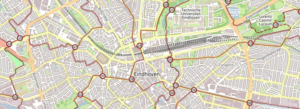
With this resource, you have all you need to go out and explore. Which is not to say there isn’t more available, or that exploration should be limited to following arrows! But those are topics for future articles.
For Eindhoven News: Roger Henke
More background info, resources, and thoughts, visuals and audio about Eindhoven, The Netherlands, cities, exploring environments and assorted fancies: https://runandwalkeindhovenregio.org/
Episodes in the Exploring Eindhoven Region series:
- The routes of Visit Brabant
- Architecture City
- Audio tree walks in the city
- The Dommel Valley
- The City Centre
- Exploring Eindhoven Region – Historical Atlas of Eindhoven
- Den Bosch
- Oisterwijk fens and Kampina
- het Groene Woud


